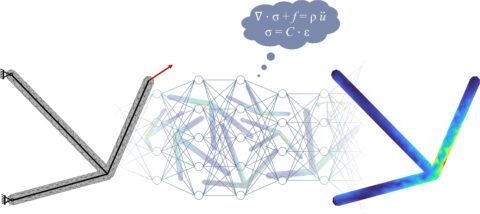Start of the DFG-funded project PINNBEAR for the evaluation, generation and design of frame structures using physics-informed neural networks in June 2025
When generating an optimal design proposal, one of the main challenges is to maximize material efficiency and minimize stress concentrations while taking various boundary conditions and loads into account. In this context computer-aided algorithms are increasingly being used in terms of structural optimization to determine suitable design proposals virtually. Therefore, different types of optimization methods can be combined on the basis of topology, shape and parametric properties.
In the field of technical mechanics, 1D elements represented as bars or beams are one of the most common abstractions. When evaluating these as Euler-Bernoulli beams certain limitations apply. These become particularly relevant when such elements are assembled into truss structures, where the simplified beam theory is no longer sufficient, especially at nodal connections due to potential multiaxial deformation and complex stress states. At this point, finite element simulations are typically employed, which however are always accompanied by an unavoidable computational cost due to the need to solve high-dimensional systems of equations.
Given numerous current developments in the context of artificial intelligence a novel approach has emerged, in which a special type of neural networks enables the prediction of physical behavior with significantly reduced computational time, while simultaneously allowing the extension of physical models. These so-called physics-informed neural networks (PINN) are trained both on synthetic datasets and through the incorporation of relevant physical laws. Within this research project the structural-mechanical behavior and the geometry of 1D idealization in particular are to be estimated by using PINNs. Therefore, the results of previously at the KTmfk completed projects can be used to some extent. The objective is to develop an integrated process from data generation to the construction and optimization of such PINNs
